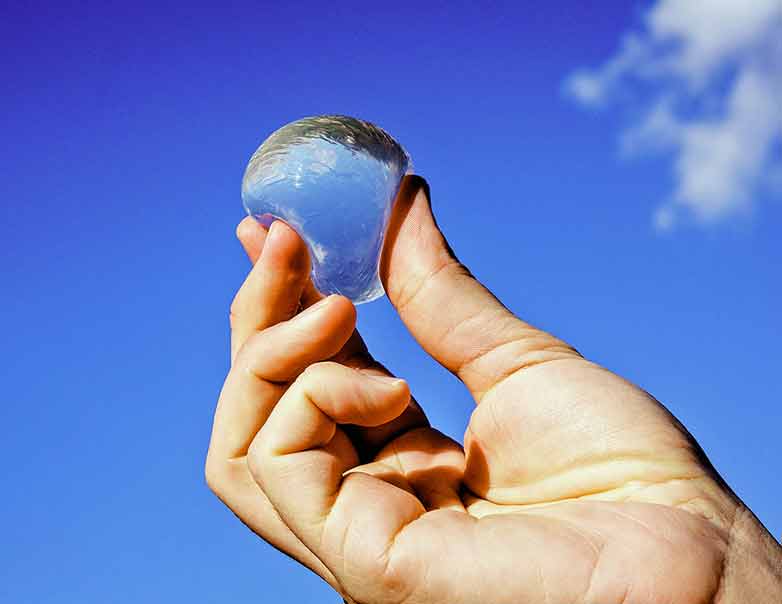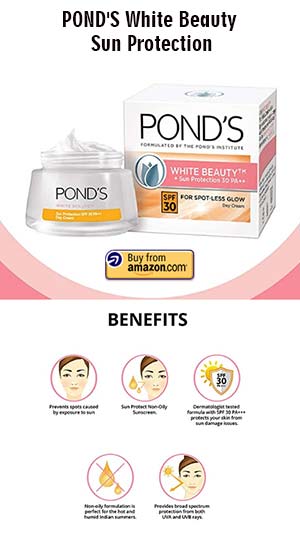What are edible water and edible water bottles?
The ‘edible water and Edible Water Bottles’ is a blob-like water container made from sodium alginate gel. Fascinating, isn’t it? The packaging is completely biodegradable in nature and was created by a London-based start-up called Skipping Rocks Lab, a group of researchers from RCA and Imperial College of London and business entrepreneurs whose primary motive was to make usage of single-use plastic obsolete.
What is Ooho Water Bottles?
The edible water bottle made by its creators was named as ‘Ooho.’ It is a gelatinous, double-membrane blob made by a simple process called ‘spherification.’ In this process, ice is dropped into separate solutions of calcium salt and sodium alginate to obtain what we call- Ooho, a good water bottle. The main highlight of these water bottles is that their container is fully biodegradable, which makes it a highly sustainable approach against single-use plastic bottles.
What are the Edible Water Bottles made of?
It is made up of biodegradable agents like Seaweed and Plant. The membrane of the edible water or Ooho, named “Notpla,” is made from the extractions of Brown Algae and Calcium Lactate. All the elements used in the making of its membrane are found in abundant quantity, which makes it highly accessible and available to a broader spectrum. They can be called and known as the transparent sachet, which is sold.
The prototype of this famous creation was done by the Skipping Rocks Lab, and this is when the scope of these edible water packs elated. Ooho, which has made for the same, has made a lot of other condiments in the form of solid mixture that can be consumed once they are put inside your mouth. They act like a blob and pop effect, which are extremely efficient since you don’t have to carry the packaged drinking water anymore. Over 1000+ plastics have been reused and cycled together by Ooho, and they have made this fantastic unit of taste for people from all around the globe. They are compressed and sold in blobs to people.
How can good Water Bottles put an end to Plastic Packaging?
The membrane of the Ooho water bottle, Notpla, is 100% biodegradable, which puts an end to the pollution caused by single-use plastic containers. Its biodegradation period is around four to six weeks, which makes this a highly sustainable approach. The elements used in the assembling Ooho bottles are significantly cheaper than the ones used in conventional water bottles, which make it both eco-friendly as well as economically better. The emission of carbon dioxide while making Ooho bottles is five times less, and consumption of energy is nine times less than the unsustainable, conventional water bottles! Keeping all this in mind, yes, these edible water bottles can put an end to plastic packaging and help us create a higher standard of sustainable development.
One of the main ways through which you can end the era of using plastic, they are a convenient way for you to consume H20. They have excellent quality for you, which you can enjoy once you are using them instead of packaged drinking water. Since they are biodegradable, it will feel like you are consuming something that comes out for you to have a good taste that you want. And the primary source is the crowdfunding of Ooho water that has helped a lot and with the fantastic source and the reach with the broad group and level of audience that it has got from all and over the ton.
Paslier believes that the Ooho group can be concentrated and targeted towards the lead growth of the audience if there are more people who know about it. And this can only be done with the help of the reach that the audience gets on time. It is the way through which you can packet down the source of the water and then advertise the primary ailment to the people to educate them about usage and consumption. The layer can be peeled off like you are eating an orange. So they are suitable for your usage and can be done conveniently.
What do Edible Water Bottles Taste like?
Neutral! The spherification of Ooho bottles is done using neutrally flavored alginate. Although it is thicker than the standard water because alginate is thick. Researchers are aiming to add flavors to it in the upcoming future, but as of today, it has no taste of its own. The concept of the Ooho membrane has been taken from the fruit. One can either consume the piece as a whole or peel away and compost the exposed, outer layer and consume the inner, clean sheet. Similarly, you can either drink the complete packaging or pierce a hole into it and consume the water inside and dispose of the packaging guilt-free.
How to make Edible Water Bottles at Home?
Yes! One can make edible water at home, too. You have to possess these key ingredients: Water, 1 gram sodium alginate, 5 grams of calcium lactate, a large bowl, a small bowl, a spoon suiting the size of blob you want to make, and a hand mixer.
The process is as follows:
- Add 1 gram of sodium alginate in the smaller bowl with a cup of water.
- With the use of a hand mixer, make sure the sodium alginate mixes well with water. Let the mix rest for around 15 minutes so that the air bubbles could pop out. The mixture now will turn from a white liquid to a clear broth.
- Take the giant bowl and stir 5 grams of calcium lactate into 4 cups of water. Mix the two well to dissolve the calcium lactate into it.
- Use the spoon of your suitable size to scoop out the sodium alginate solution from the smaller bowl.
- Now, gently drop the spoon into the giant bowl containing calcium lactate solution. It will immediately form a ball of water into the pan.
- You can drop more spoonfuls of sodium alginate solution to the calcium lactate mixture to make more balls.
- Keep in mind not to let any of the balls touch each other, else they would stick to each other, and the product will not be consumable.
- Let the water balls sit in the calcium lactate solution for approximately 3 minutes.
- The time you leave the water balls in the solution determines the thickness of the packaging. Leave for lesser time for thin packaging and more for thick packaging.
- Use a slotted spoon that is taken to remove the ball. Place each ball in a fresh bowl filled with water to stop the reaction to go any further.
- Now the water bottles can be removed from the water and are ready to be consumed.
Does the idea of Edible Water Bottle scale?
Plastic waste is the most significant pollutant of seawater. It is destroying aquatic life on a dangerously expanding extent. Where it takes almost 450 years for a conventional PET bottle to decompose, an Ooho bottle decomposes in 4 to 6 weeks from the manufacture date! The idea is to replace single-use plastic bottles with a highly sustainable approach like these edible water bottles.
Are Edible Water Blobs available?
Yes. These shapeless orbs are being sold at pop-up shops around the U.K. and are offered as samples at marathons and music festivals, though it is still not readily available at a broad spectrum. Skipping Rock Labs is making an effort to seek more attention to this idea. Their goal is to fully replace PET packaging with the Notpla membrane packs to revolutionize the concept of portable water.
Are Edible Water Blobs cost-effective as compared to plastic water bottles?
Yes, they are cost-effective at a significant scale as compared to the usual plastic water bottles. It roughly takes 2 cents (Rs. 0.13) to make a 250 ml unit of the Ooho bottle. Its membrane, Notpla, is cost not only sufficient to produce but also biodegradable in nature, which saves us from the energy-consuming recycling process of hazardous plastic waste. It is not only cost-effective monetarily but also in terms of energy consumption. It takes almost nine times less energy than what it takes to make a usual PET plastic bottle. The emission of carbon dioxide is five times lesser than the typical bottle. It not only saves us the monetary currency but the energy currency too.
Where can I buy Ooho/ edible water bottles?
As of now, these useful blobs of water are not available in our grocery stores. They are still under experimentation. The main reason behind it is the minimum shelf life of 4 to 6 weeks from the manufacturing date. It still needs proper marketing and media exposure to make it to every ordinary person’s daily necessities.
What is the price of Ooho water balls?
In the coming future, Ooho water balls are expected to be priced as follows:
- 2 for a 100 ml pack (suitable for the age group of 1-5)
- 4 for a 200 ml pack
- 6 for a 350 ml pack (ideal for the age group of 6 and above).



